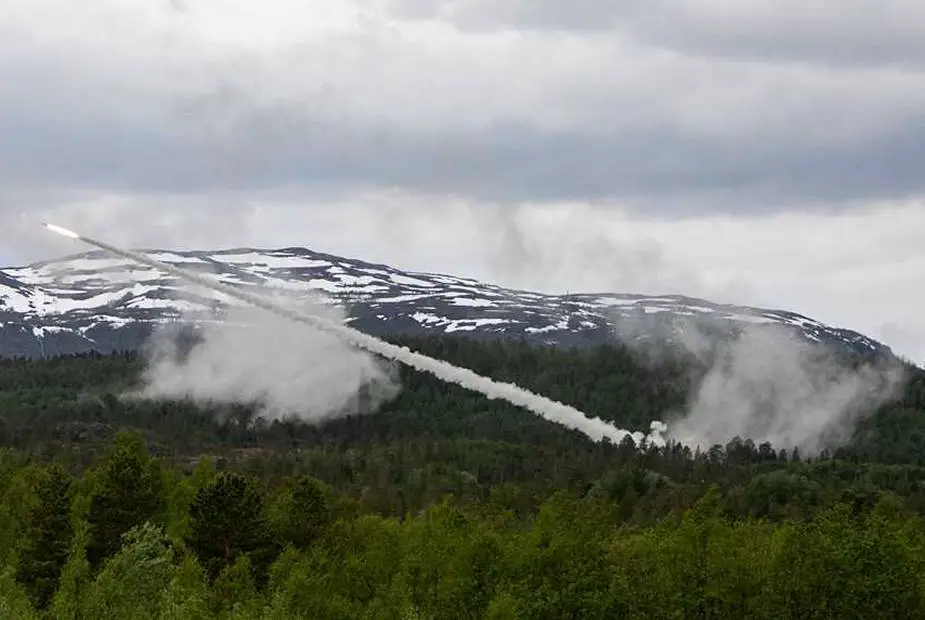Last week, the 41st Field Artillery Brigade of the U.S. Army concluded field artillery exercises Fires Shock, as a part of Exercise Thunderbolt, a joint multinational exercise that included Norwegian Army Brigade North, US Army 41st Field Artillery Brigade and U.S. Marines from 2nd Air Naval Gunfire Liaison Company.
Follow Army Recognition on Google News at this link

This was the first time, in over a quarter-century, that the U.S. Army conducted an MLRS live fire in Norway. (Picture source: Kongsberg)
For the 41st Field Artillery Brigade, this was the fifth and final live fire in the Fires Shock series - exercises conducted from the Arctic to North Africa. The firing exercise included the Norwegian K9 weapon and US Army’s Multiple Launch Rocket System (MLRS).
The K9 self-propelled howitzers were delivered to the Norwegian Army in 2020. They include the Integrated Combat Solution (ICS) and Odin Fire Support System (Odin FSS) from Kongsberg. Odin FSS is an ASCA compliant system that significantly improves the operational capabilities of any artillery weapon system. ASCA provides a fully digital sensor to the shooter connection between allied nations, speeding up the process of fire missions, securely delivers target data and thus prevents fratricide. ICS and Odin FSS together provide the digital backbone in the K9 ensuring fast and secure execution of fire missions.
Odin FSS can utilize any IP-based communication solution, which is designed especially for use of tactical low-band radios with a communication solution, tailor-made for challenging terrain and extreme conditions such as the Arctic.
The artillery exercises Fires Shock, a drill on rapid deployment of long-range precision fires, encompassed a series of field artillery exercises. This was the first time, in over a quarter-century, that the U.S. Army conducted an MLRS live fire in Norway.
Arctic artillery training is important to increase NATO Allies’ ability to operate in extremely cold weather, mountainous and high latitude environments. Exercises like these demonstrate the ability of NATO Allies in securing national interests, and the ability to command and control long-range fires in demanding environments.














